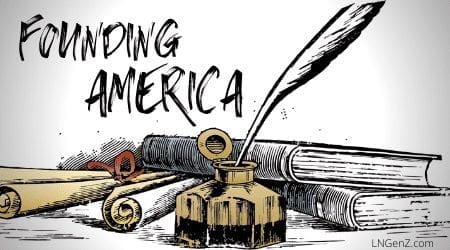-
Declaring Independence
- The Spark of Revolution – Lesson – VIDEO
- Declaration of Independence: Freeing America from Foreign Rule – Lesson
- Declaration of Independence: Freeing America from Foreign Rule – Quiz
- Declaration of Independence “Rough Draught” Now on Microfilm – Lesson
- Declaration of Independence “Rough Draught” Now on Microfilm – Quiz
- Independence Day: The History You Might Not Know – Lesson
- Independence Day: The History You Might Not Know – Quiz
-
Fighting for Independence
- The American Revolution: From British Subjects to US Citizens – Lesson
- The American Revolution: From British Subjects to US Citizens – Quiz
- The Black Patriots and Freedom in America – Lesson
- The Black Patriots and Freedom in America – Quiz
- Revolutionary Women: America’s Founding Females – Lesson
- Revolutionary Women: America’s Founding Females – Quiz
-
Founding a New Republic
The Republic: A Representative Democracy – Lesson
The United States is a republic, which is a representative, or indirect democracy.
In the early 1800s, the Chief Justice of the U.S. Supreme Court, John Marshall, wrote, “Between a balanced republic and a democracy, the difference is like that between order and chaos.”
A lot of people are confused about what type of government the United States has. The simplest explanation is that the United States is a republic, which is a form of indirect, or representative, democracy. A republic must comply with a constitution that protects the rights of the minority. A direct democracy, on the other hand, is a pure form of majority rule.
 To break it down further, imagine that you and nine of your friends are a democracy. It’s a Friday night and the options are to go to the movies or the school football game. A vote is taken and six pick the game while you and three friends choose the movies. As a democracy, you are forced to go to the game.
To break it down further, imagine that you and nine of your friends are a democracy. It’s a Friday night and the options are to go to the movies or the school football game. A vote is taken and six pick the game while you and three friends choose the movies. As a democracy, you are forced to go to the game.
In a true democracy, or a direct democracy, the people vote directly on every issue. Most democratic governments in the world today are actually some form of representative democracy, in which the people elect representatives to make laws for them. Some of these are more democratic than others, but because the officials are elected by the people, many just think of them as democracies.
A democracy is a form of government where laws are made by the voting majority. Whatever most people vote for becomes the law, whether it abuses the minority or not. In our constitutional republic, the people choose representatives who then meet and decide on laws, which are supposed to follow the guideline of the Constitution. This system is designed to protect the rights of the minority from the will of the majority. In practice, Americans vote for senators and representatives who stand for them in Congress. It can be risky to trust these representatives, and the system is based on trust that the elected members of Congress will represent the will of their voters.
The Founding Fathers were clear in the creation of a constitutional republic for the United States. James Madison described the difference most clearly:
“It [the difference] is that in a democracy, the people meet and exercise the government in person: in a republic, they assemble and administer it by their representatives and agents. A democracy, consequently, must be confined to a small spot. A republic may be extended over a large region.”
A round of letters between Founding Fathers Alexander Hamilton and Gouverneur Morris also insisted the new nation be a republic rather than a democracy:
“But a representative democracy, where the right of election is well secured and regulated & the exercise of the legislative, executive and judiciary authorities, is vested in select persons, chosen really and not nominally by the people, will in my opinion be most likely to be happy, regular and durable.”
There is no mention of the word “democracy” in the Declaration of Independence nor the U.S. Constitution.